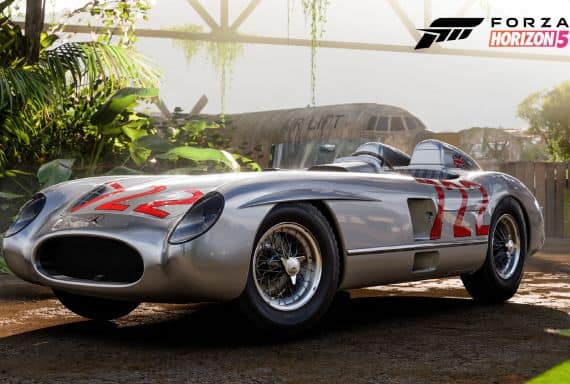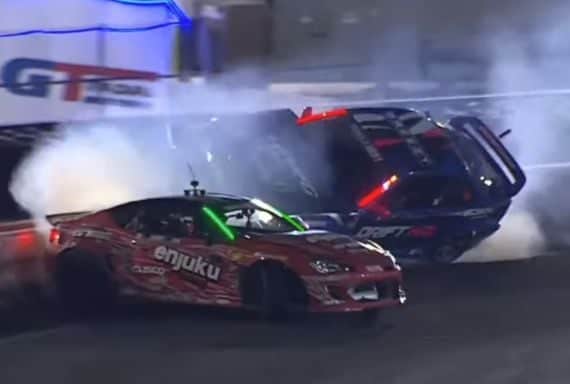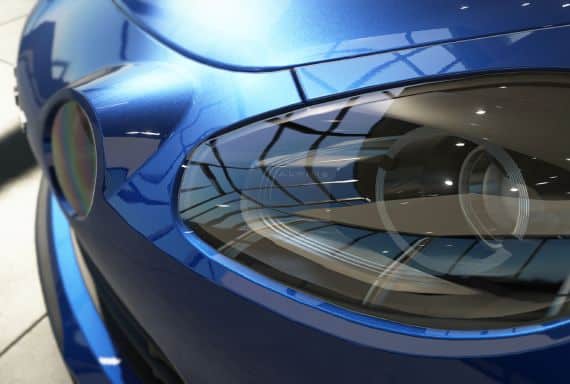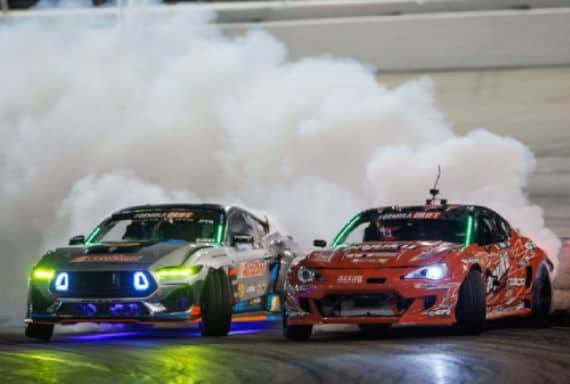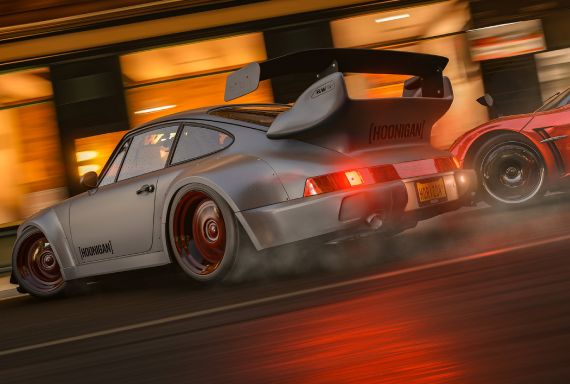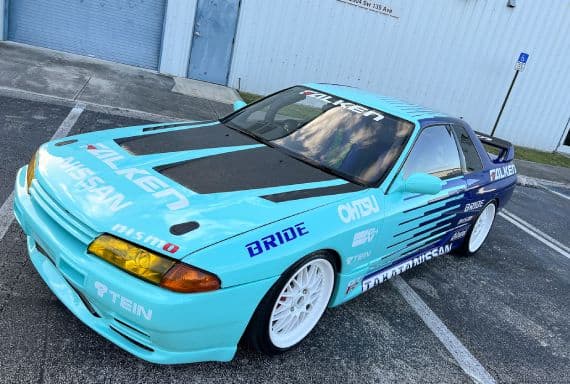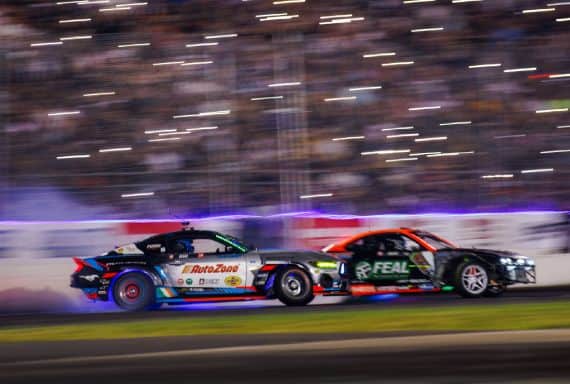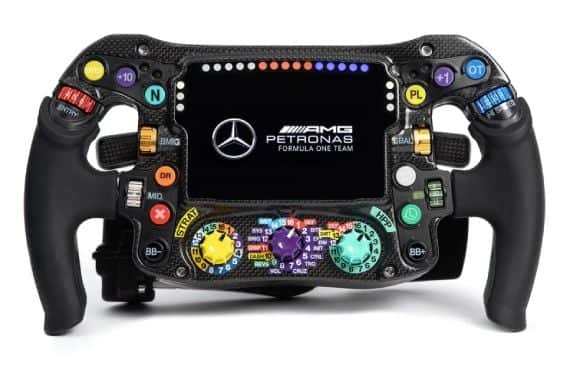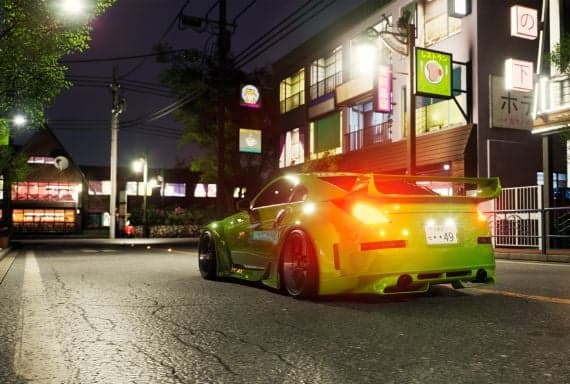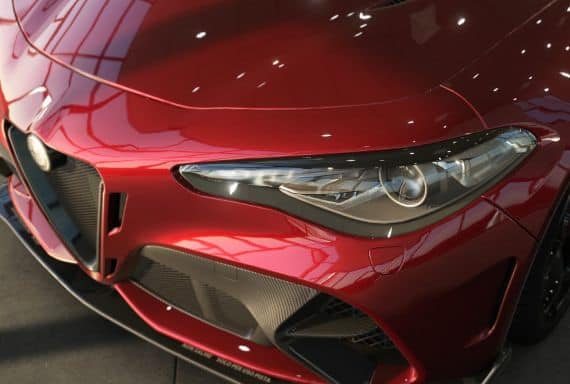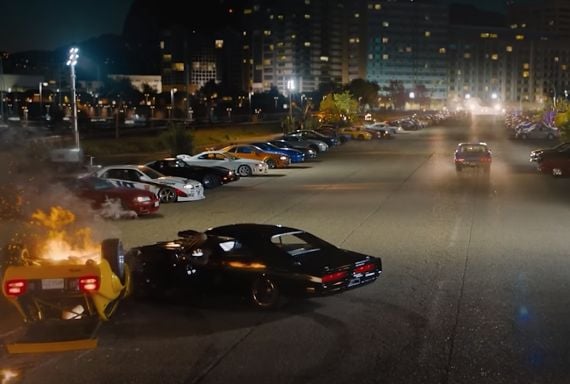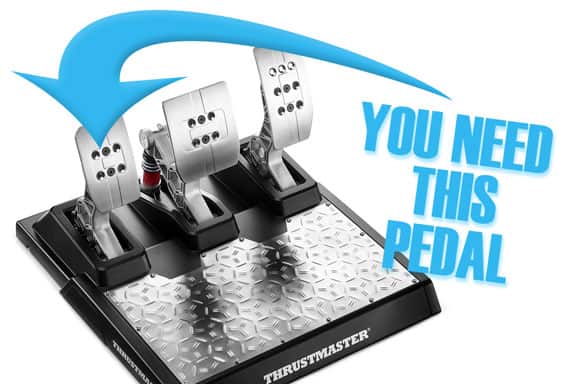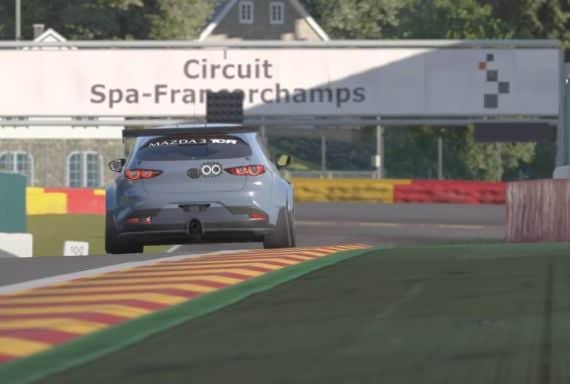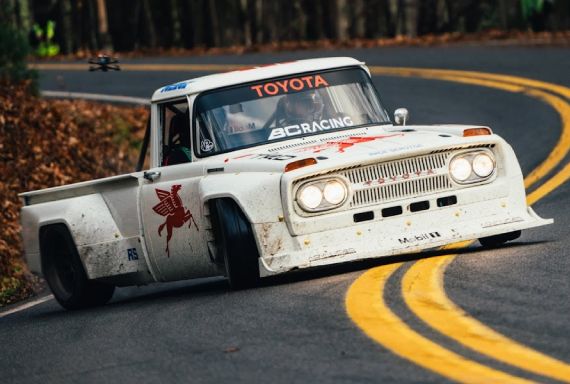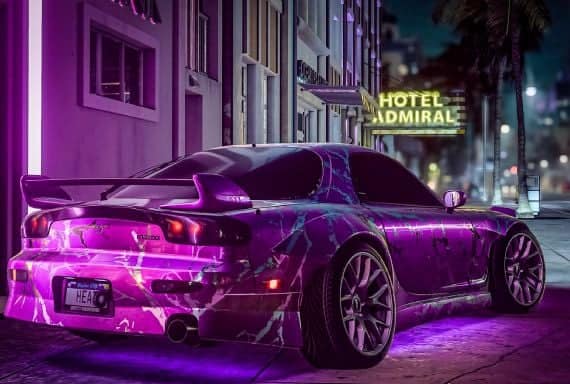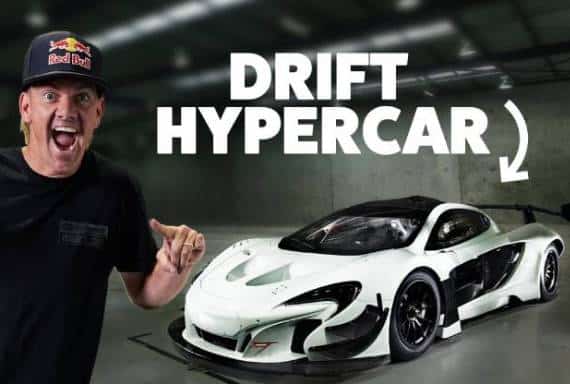Ultimate Drift Competitions Guide
Watching drifting without fully understanding the rules can be a little confusing to newcomers, so we’re explaining everything there is to know about drift competitions in this guide.
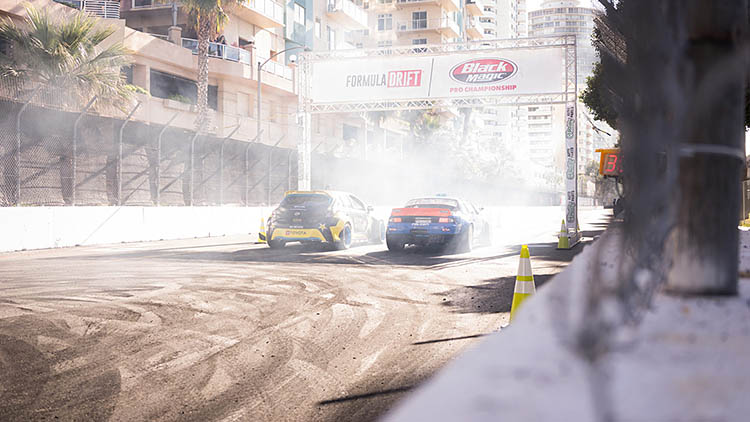
Introduction
For those of you that are new to drifting or not too clued up on how the competition process works, we’ve got you covered.
When you initially watch a drift competition for the first time, you’re probably be left wondering why and how they’re deciding the winners.
Your first time watching a drift event will probably go something along these lines:
“Wait, why is that dude allowed to go first?”
“Hold up – he didn’t overtake the other guy, so how did he win?”
Whether you’re at this stage of the process or perhaps looking for more in-depth knowledge, we’ll be covering everything you could need to know in this guide.
Where Did It All Start?
Drifting originated in Japan, as street racers began sliding their way down the rural twisty ‘touge’ mountain roads, as shown in popular manga and anime such as Initial D.
Keiichi Tsuchiya is known as the ‘Drift King’, and it was arguably the drifting legend that brought the sport to the mainstream, as he began drifting during race events. Tsuchiya stated, “I drift not because it is a quicker way around a corner, but it is the most exciting way”.
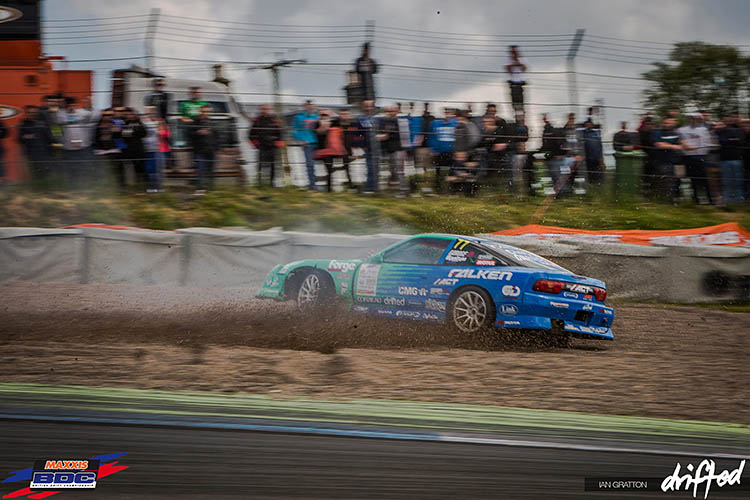
He then produced the world-famous Drift Bible, which taught potential drifters worldwide everything they could need to know when it comes to ultimate car control.
In 2000, Tsuchiya helped create the first official drifting competition, named D1 Grand Prix (or D1GP), as Japanese competitors went head-to-head to battle for victory.
In 2004, the sport reached American shores with the Formula DRIFT (or FD) series. FD soared in popularity and soon became the pinnacle of worldwide drifting competitions, providing a playground for the best that the likes of Japan, Europe, and America have to offer, as they prove they have what it takes to lift the trophy.
As drifting evolved, competitions soon began popping up across the globe, and the exciting and intense sport went on to achieve mainstream success, thanks to the likes of the Fast and Furious franchise bringing it to Hollywood.
Drift Competitions in the Present Day
Now that drifting has reached just about every continent, many countries have numerous competitions on offer, from grassroots to pro.
Given the soaring popularity of the sport, it’s harder than ever to achieve Pro status, which typically means you’ll need to climb up the ranks to reach Pro status, and you’ll need to build a serious car to do so.
If you’re keen to get involved with drifting, then make sure you head over to our Drifting 101 guide, which will explain everything you need to know to get you started.
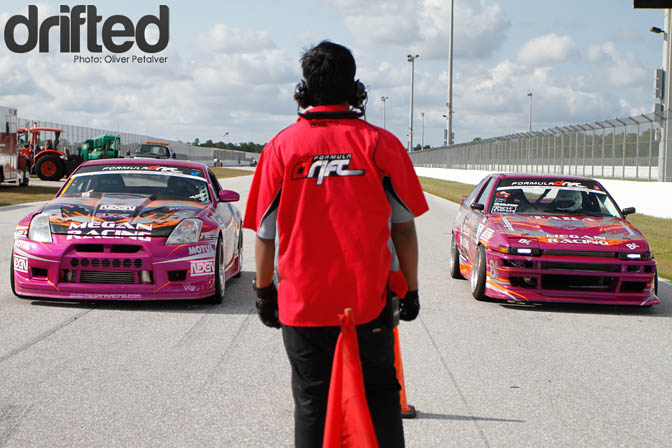
For those eager to master the art of drifting, our How to Drift guide will explain the basics, right the way through to the advanced techniques of the ultimate car control.
With the rise of e-sports during the Coronavirus pandemic, drifting is now reaching far and wide, with gamers keen to get to grips with what the drifting scene has to offer.
As drifting simulators such as Assetto Corsa enabling you to drive just about every track and car combination imaginable, it’s the perfect opportunity to learn drifting from the comfort of your own home.
Once you’ve grasped the basics, you’ll undoubtedly want to put your skills to the test, and this is where competitions such as the Virtual Drift Championship (VDC) provide the perfect solution.
Since the pandemic has even forced the Pro drivers to stay at home, they, too, have been joining the online competitions to prove they have what it takes to compete with the best of the virtual world.
If you’re keen to get into sim drifting, then make sure you check out our ultimate GPU guide.
For those who haven’t got the spare cash to invest in a sim racing rig, our Drifted arcade features all of the best free online drifting games.
Although sim racing isn’t quite the same as the real thing, it thankfully avoids the inconveniences of time and expenses that come with real-world drifting.
You no longer need to worry about the cost and time that comes with trailering your car to and from events, the hassle of repairs, buying and changing tires, and all other aspects of the sport that can become a little challenging.
If you haven’t already, then we highly recommend checking out what the virtual world of drifting has to offer, but in the meantime, let’s take an in-depth look at drifting competitions.
How Do Drift Competitions Work? The Basics
Unlike most motorsports, you don’t win at drifting by being the first car over the finishing line. Far from it, in fact.
There’s far more to drifting, which is where things can become a little confusing for those that aren’t familiar.
We’ve all seen drifting by now, but the difference between someone sliding their car on the street and the technical aspect of competitions are wildly different.
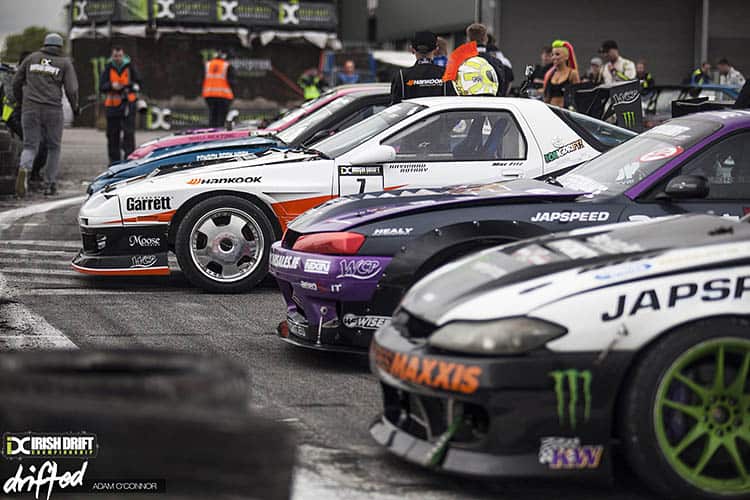
Drifting is a judged sport, which is sometimes done via an intelligent GPS-based telemetry system, as seen in D1GP.
More commonly, it can also be decided by human judges, typically three, in a judging tower – observing and scoring each run.
Whether using the telemetry system (such as DOSS) or the traditional judging format, a course is marked using lines and/or cones on the track and a briefing from judges to explain what they want to see from the drivers.
For this reason, the judging process may be different each time an event returns to the track.
For example, the judges may move the clipping points or opt to add or remove ‘touch-and-go’ areas.
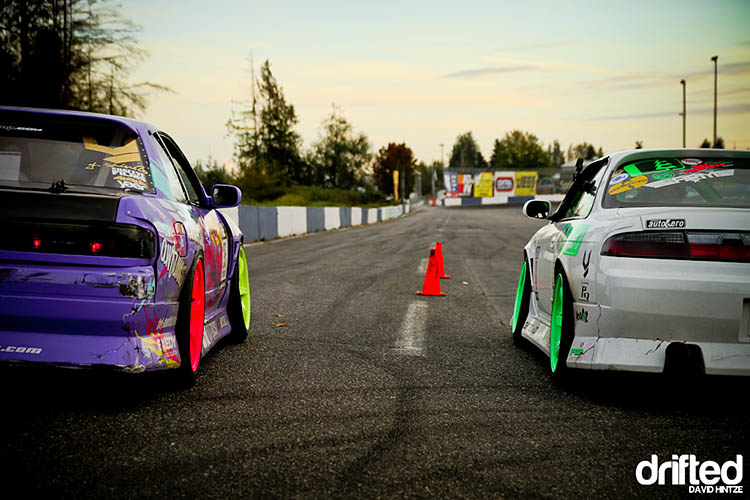
Firstly, drivers will run single qualification runs to achieve the best score possible, typically based on a 100-point maximum.
Once qualifying is complete, drivers will be ranked based on their highest score from two individual runs, which will typically produce a Top 16 or Top 32, with the lowest qualifier facing the top qualifier, etc.
From there, the two drivers will go head-to-head until one driver becomes crowned as the winner.
For a basic understanding, let the Red Bull Driftbrothers explain the process.
Now that you know the basics, we’ll take a more in-depth look at how each system works.
Drift Competitions: Judging
Although some competitions, such as the FIA Intercontinental Drifting Cup, opt for a complicated computerized telemetry/GPS system to track cars’ movement throughout drift competitions, its integration has been somewhat controversial.
It may come as a surprise that the typically favored and significantly less controversial opinions come from human judges, typically three of them, which are likely to be located in an elevated position at the track.
Although the DOSS-style computers may eventually take over the sport, we don’t feel that they’re yet ready to provide the level of accuracy required to judge the sport correctly. Still, we’ll be interested to see how it evolves as time progresses.
For this section, we’ll stick with explaining the typical judging format that we’d expect to see from the most respected competitions, such as Formula DRIFT.
How is Drifting Judged?
The three-judge panel watches on as the drivers show off their most impressive skills, both in qualifying and then battles.
This great video from Ryan Sage explains how the judges determine the score during Formula DRIFT qualifying.
Using a layout the judges have designed on the course with markings and sometimes cones, drivers are informed of what the judges expect to see during the briefing.
The layout will likely include clipping points, where the drivers will have to get as close as possible to that specific marker.
On an inner clipping point, drivers will typically be deducted points for hitting it. On an outer clipping point, a minimal amount of contact is generally allowed. For example, if they were rubbing the bumper against the wall-based clipping point without it falling off.
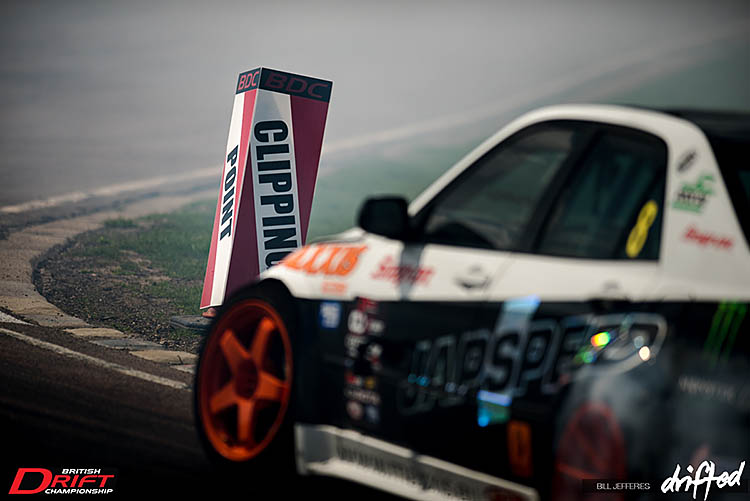
Clipping zones are typically marked areas where they expect the driver to stay within the specified zone.
The specific criteria vary depending on what the judges are looking for from the layout specified.
In some competitions, they’ll have a specific judge for each aspect that they’re looking for from each run.
For example, some competitions have one judge looking at the line, another for the angle, and another for style.
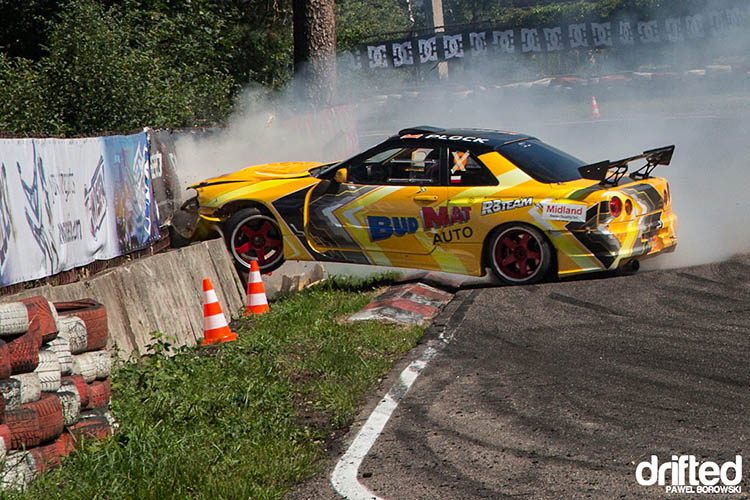
However, this isn’t always the case. Typically each judge will submit their overall score (out of 100) based on all of the criteria.
In drifting events, the judges’ decisions are final. Some competitions will allow you to submit an independent review after the event should you feel they have made a severe error.
However, this will, of course, be too late to change the event’s outcome.
Drift Competitions: Qualifying
In qualifying, the judges will determine each driver’s score based on their single run, typically out of a maximum of 100 points.
Each driver gets two attempts (runs) to lay down their best score possible. Whichever score is the highest from both runs will then be used to decide their overall ranking in the qualification session.
The judges are typically looking for three main aspects from drivers during the Qualifying session.
Line
Drivers are scored based on how well they adhere to the qualifying line that has been mapped out by the judges during the briefing, integrating the pre-set front and rear clipping points and zones on the track.
Competitors will aim to get their car as close as possible to the inside clipping points, or zones, with the front of their car while sitting sideways. For outside clipping points (and zones), they’ll need to do the same – but with the car’s rear.
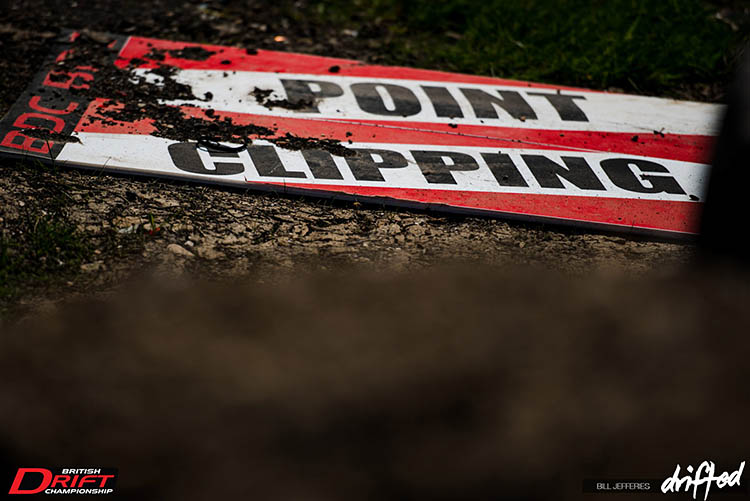
The drifting line, combined with the clipping points and zones, tests the drivers’ ability and control of their car.
A good drifting line should also enable smooth and stable drifting to ensure exciting battles as the competition progresses.
Angle
Although drivers throwing down huge angles are exciting to watch in drifting, it may not make for the best battles further down the line in competition, so this is another element that the judges are likely to address.
The angle is judged based on the overall angle achieved by the driver throughout the qualifying run.
Suppose you’re capable of following the line provided and linking all the clipping points with the maximum angle possible for sustained periods. In that case, you can guarantee you’ll get rewarded the highest angle points.
However, if your only goal is to throw down the most significant angle before making numerous angle corrections to maintain the drift, you’re going to get points deducted.
Style
Smooth yet fast-paced, aggressive drifting is what the judges are likely looking for here.
The art of drifting is a show, and with rapid, fluid initiations and transitions combined with minimal corrections, and full commitment, you can expect to reap the rewards when it comes to scoring.
Style is your overall driving style throughout the course, combined with the ‘wow factor’ you’re providing for the spectators.
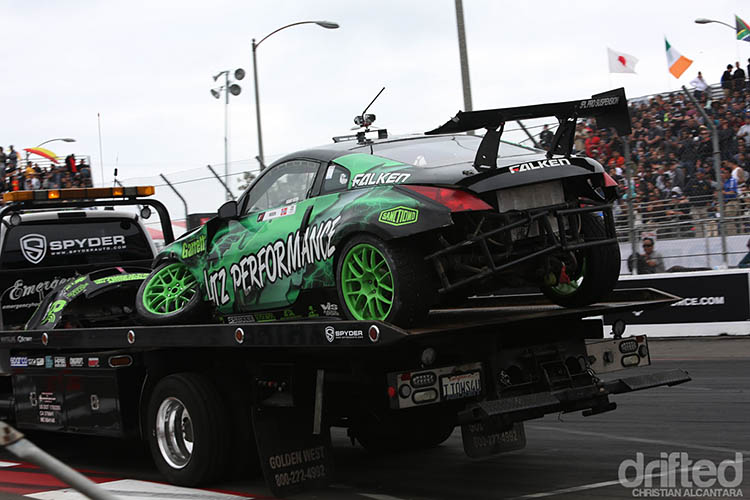
As always, different judges will have other criteria. For example, when Keiichi Tsuchiya was judging the King of Nations series, he insisted that he wished to see speed prioritized over the drivers’ angle.
With these three factors in mind, the judges assess each driver’s two runs before providing them with their highest qualification score used to decide their position.
Typically, drivers that spin out, understeer, or drop more than one (or sometimes two) wheels off track, can expect to earn zero points for that run.
Ryan Lanteigne breaks down the Formula DRIFT Long Beach Judging process in this video for those keen to know more.
Deciding The Battles
In most competitions, judges will decide the Top 32 drivers to advance to the battles, but some drift competitions, typically smaller ones, may only be a Top 16.
The drivers ranked outside of the Top 32 are left to pack their things, as their weekend has come to an early end – they have not made the rankings for the main event.
For those that ranked within the Top 32, they’ll go head-to-head against the opposite end of the qualifying table. For example, 1st place will face 32nd, and 2nd place will meet 31st, etc.
The main benefit of a high qualifying score is not only bragging rights in the paddock but that you’ll (hopefully) meet the easiest contenders on your route to the final battle.
Drift Competitions: Battles
Let’s face it – tandem battles are known as the ‘main event’ for a reason. They’re the moment every die-hard drift fan spends the entire competition weekend waiting for.
With the qualification battles narrowing down the field to the Top 32, or sometimes Top 16, it’s time for the top qualifiers to go head-to-head to decide a winner.
As the two drivers line up on the start line, they’ll take it in turns to go first, with one leading and one chasing, in what’s known as twin drift, or ‘tsuisō’ (chasing race) in Japanese.
The two drivers will now battle it out on the track, drifting the course simultaneously within the closest proximity possible, sometimes getting close enough to leave tire marks on the competitors’ door.
As the lead car follows the same line provided to the drivers during qualification, the chase car’s role is to maintain the closest proximity to the lead car possible.
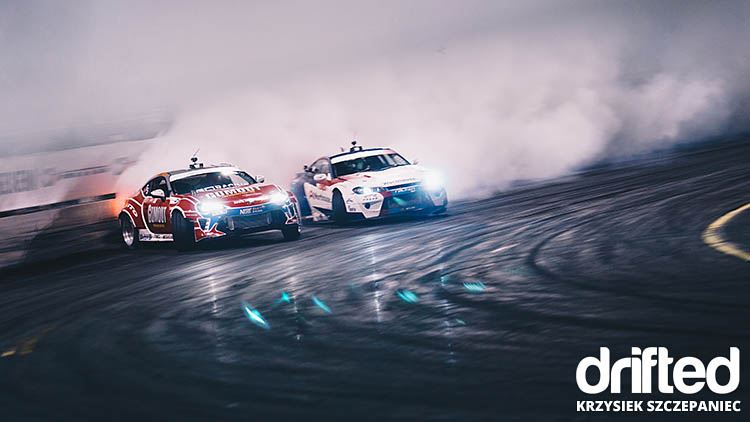
With insane proximity to the game’s aim, the chase car has the opportunity to instill fear into the lead driver, making them panic and potentially make unforced errors.
After the first run, the lead car and chase car switch positions, and the games begin once again.
With everything considered after the two runs, the judges decide on the winner to progress to the next round.
In the event of a tie, the judges will declare a ‘one more time’. In this scenario, both drivers will get a chance to change tires, if necessary, before starting the lead/chase process once again.
Once the Top 32 process is complete, you move on to the Top 16, then the Top 8, until just two competitors remain as they battle it out for the podium’s decisive spots.
Since the drivers have become accustomed to the line and clipping points/zones they’ve been using for both practice and qualification sessions, this makes for exciting tandem battles.
Five-Minute Rule
In the event of a car issue, most competitions provide a ‘five-minute’ rule, which allows five minutes to carry out the necessary minor repairs to their car.
The timer starts from the moment the vehicle reaches the paddock until it returns to the start line.
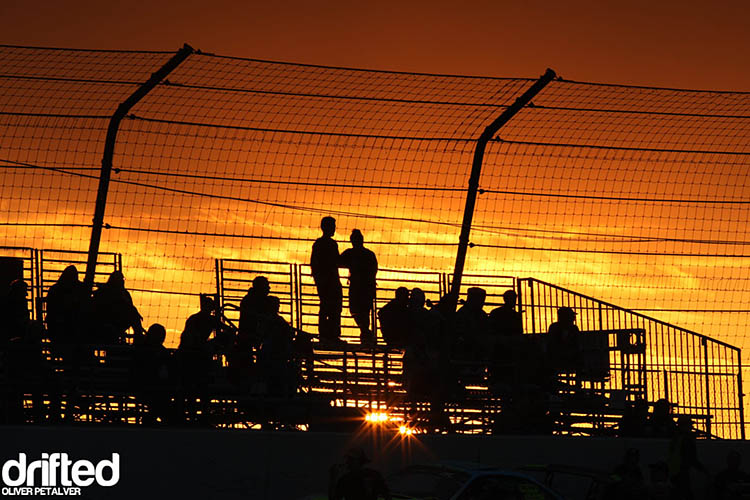
Unfortunately, this sometimes ends with the event ending early for some competitors. It’s similar to getting to the F1 starting grid only for your car to fail.
Here are some of the highlights from the 2019 Formula DRIFT competition battles:
And for the up-and-coming Drift Masters European Competition (DMEC), here are their 2019 battle highlights:
Which battles do you feel were most exciting? We’d love to hear your opinion.
Drift Competitions: Penalties
As you’ve probably guessed, each drift competition has its own rules when it comes to race penalties.
Straightening/Spinning
Straightening the car, spinning, understeering, and opposite drift will potentially earn you zero points in both the battle and qualification process.
Off-Track
A momentary loss of drift, or perhaps dropping one wheel off the track, can sometimes result in reduced points, but in some competitions, dropping a single wheel will also earn a zero.
Contact
Contact is always a grey area, and some competitions will allow for minor contact, but you can expect to lose the battle if the touch disrupts the other driver while drifting, which could potentially lead to a spin or a crash.
While some competitions allow for light contact, others have enforced non-contact rules, which would then be mentioned in the pre-race briefing.
Overtaking
Passing the opponent if they go way off-line is another grey area. While some competitions will allow it, other competitions will insist you have to do your best to stay behind the car, with no overtaking under any circumstances – unless the other driver leaves the track, of course.
Loss of Car Panels
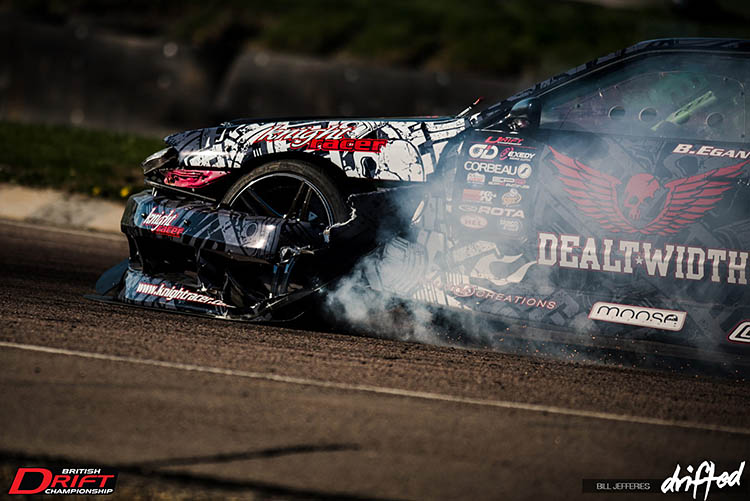
Opening body panels not being latched down correctly, such as the hood, trunk, or doors, is another common reason for earning a zero due to lack of safety.
Brake Checking
Brake checking is where a driver deliberately hits the brakes to ‘cheat’ their way to victory; this is often a common complaint in drifting, which is why you may see multiple brake lights fitted to competition cars.
Drift Competitions: Safety & Scrutineering
With drifting’s astronomical rise to fame in recent years, it’s unsurprisingly attracted the FIA’s attention, who have begun to enforce stringent rules and regulations to the highest levels of competition worldwide.
Although you could once get away with just a five-point harness, a racing seat, and a helmet to compete, you’re going to have to get suited and booted for the main event these days.
We’ve compiled the best gear on the market to get you started with your drifting career, such as FIA-approved racing suits, helmets, shoes, gloves, seats, and steering wheels.
For those interested in safety rules and regulations, we’ve compiled some of the most important documents to take a look at:
- FIA Drifting Guidelines
- FIA Vehicle Regulations
- Formula DRIFT Regulations
- Drift Masters European Championship Regulations
Conclusion
We hope we’ve covered everything you need to know when it comes to gaining a thorough understanding of how drifting competitions work.
Although specific judging criteria will differ with each event, the general format outlined in this article is the most common choice within competitive drifting.
If you’d like to know more about competitive drifting, then make sure you check out our guide to getting into extreme motorsports.
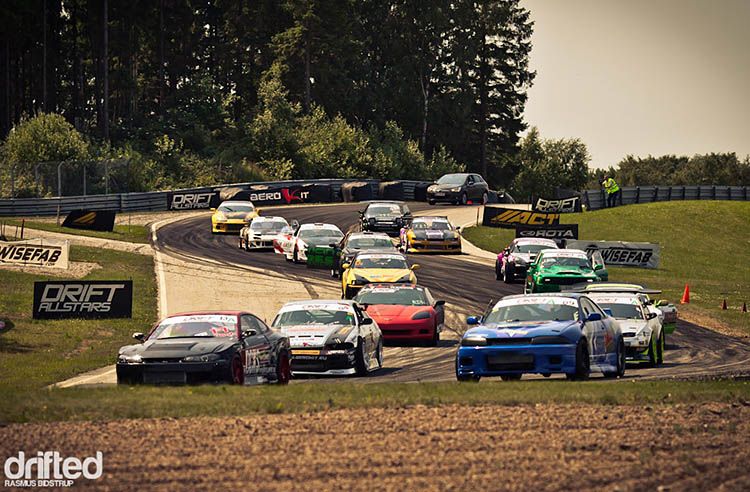
With the current pandemic, you’re likely to spend far more time at home rather than at the circuit. But that doesn’t mean you can’t improve your drifting skills!
We’ve got a whole section dedicated to gaming guides to help you achieve your ultimate drifting potential during the lockdown, whether you’re a PC, Xbox, or PlayStation gamer.
If you’re looking for a quick fix, make sure you check out our free drifting games.
So, there we have it! We hope that we’ve covered everything you could want to know about drift competitions in this guide.
Thank you for reading our Drift Competitions guide.
If you enjoyed this article, please share it with the buttons at the bottom of your screen. If you’ve found this information useful, then please take a moment to share it with other drifting enthusiasts. We appreciate your support.


